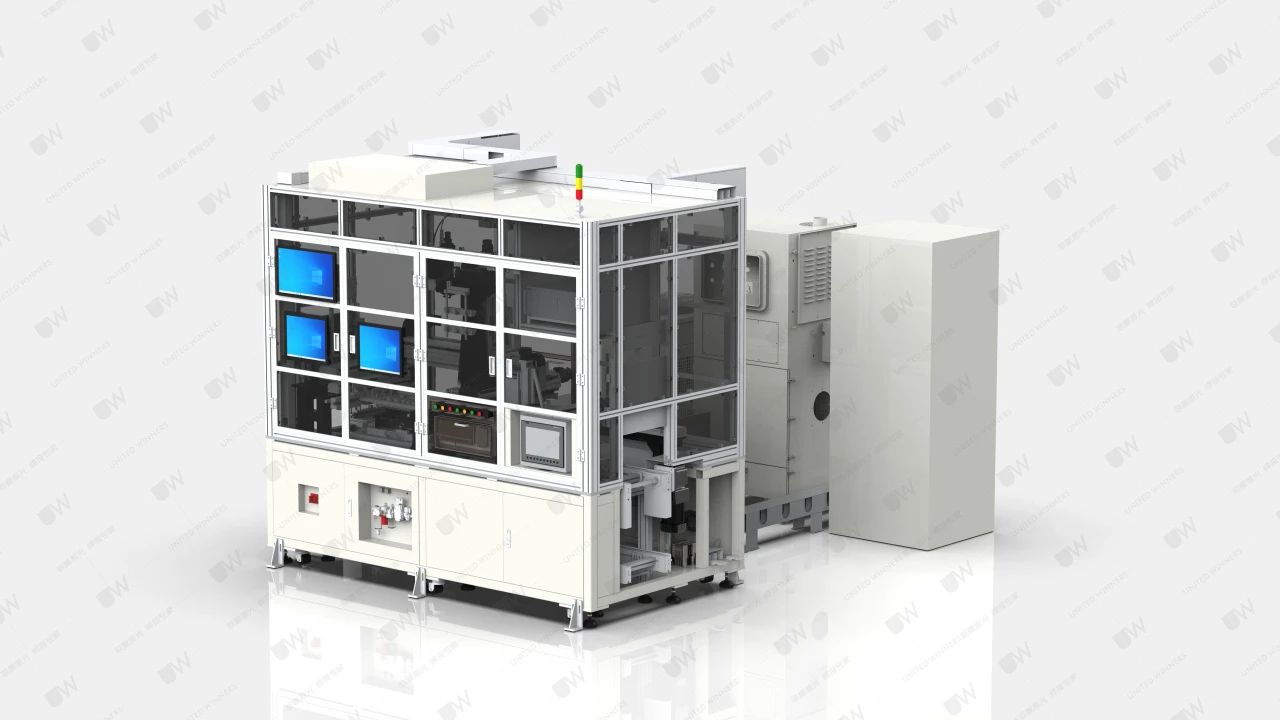
1. The Assembly Line for Electric Controller of New Energy Vehicles

This line focuses on the welding process in the production of electric controllers. It integrates a series of procedures such as manual assembly pre-locking, automatic locking, precise dispensing, automated welding, post-weld quality inspection, and residue cleaning. By achieving data collection across the whole line, building a digitalized engineering project, real-time monitoring, coupled with the support of an auto-focusing system, the stability of the welding process has been significantly improved.
Furthermore, the line integrates pressing fixtures with a blowing dust removal mechanism.not only ensuring perfect aesthetics of the welded parts but also enhancing welding quality. The overall pressing design greatly accelerates production efficiency.
Highlights
The tray adopts a parent-child fixture method, which easily adapts to the same type of products, greatly enhancing the flexibility and adaptability of the production line.
The patented design for overall pressing ensures efficient welding, integrated with blowing and dust removal mechanisms, guaranteeing the appearance and quality.
The manual locking station is equipped with an intelligent robotic arm, ensuring consistent locking sequences and avoiding omissions, while supporting visual positioning guidance.
The intelligent electric screwdriver precisely records the locking torque and number of rotations, strictly controls the locking quality, and immediately alerts in case of anomalies.
During the welding process, the focal length is automatically adjusted to ensure consistency in the welding focus, effectively reducing focal length deviations caused by height differences and enhancing welding quality.
Combining 2D and 3D camera technology, comprehensive inspection of welding appearance, holes, and dimensions is conducted. In-process monitoring detects issues such as high reflectivity and false welding, with immediate alarms for abnormalities.
2. UW Electric Controller Welding Station

Highlights
The line is equipped with a laser welding station, which can easily achieve seamless integration with third-party equipment manufacturers' lines, enabling smooth operation throughout the whole line and enhancing the flexibility and scalability of the production line.
Utilizing a silent double-speed conveyor line, which runs through the welding station and post-weld inspection station, ensures stable operation of the production process and a quiet environment.
The welding station is specially designed with interchangeable precision clamping plates that can accommodate welding for similar types of products, significantly reducing product changeover time and enhancing production efficiency and flexibility.
The equipment features autofocus functionality to ensure the precision of welding. Additionally, it can conduct real-time monitoring and alerting for welding anomalies such as false weld, missing weld, broken weld, and insufficient weld, while automatically collecting relevant data, thereby improving the reliability of welding quality.
Through precise optimization of the blowing position and shape, combined with fluid dynamics simulation, the verification cycle has been drastically shortened and the verification costs have been significantly reduced, resulting in notable improvements in the performance and economic benefits of the workstation.
3. Electric Controller Robotic Welding Workstation

Highlights
Thanks to the flexibility and high precision of the robot, this workstation can easily handle welding requirements from multiple angles and directions, enhancing the flexibility and adaptability of welding operations.
The welding station is ingeniously designed with precision clamping plates that can be quickly replaced, enabling compatibility with welding of similar products. This significantly shortens product changeover time and effectively reduces model change costs.
The equipment features autofocus functionality to ensure the precision of welding. Additionally, it can conduct real-time monitoring and alerting for welding anomalies such as false weld, missing weld, broken weld, and insufficient weld, while automatically collecting relevant data, thereby improving the reliability and traceability of welding quality.
Through precise optimization of the blowing position and shape, combined with fluid dynamics simulation, the verification cycle has been drastically shortened and the verification costs have been significantly reduced, resulting in notable improvements in the performance and economic benefits of the workstation and bringing greater value for customers.